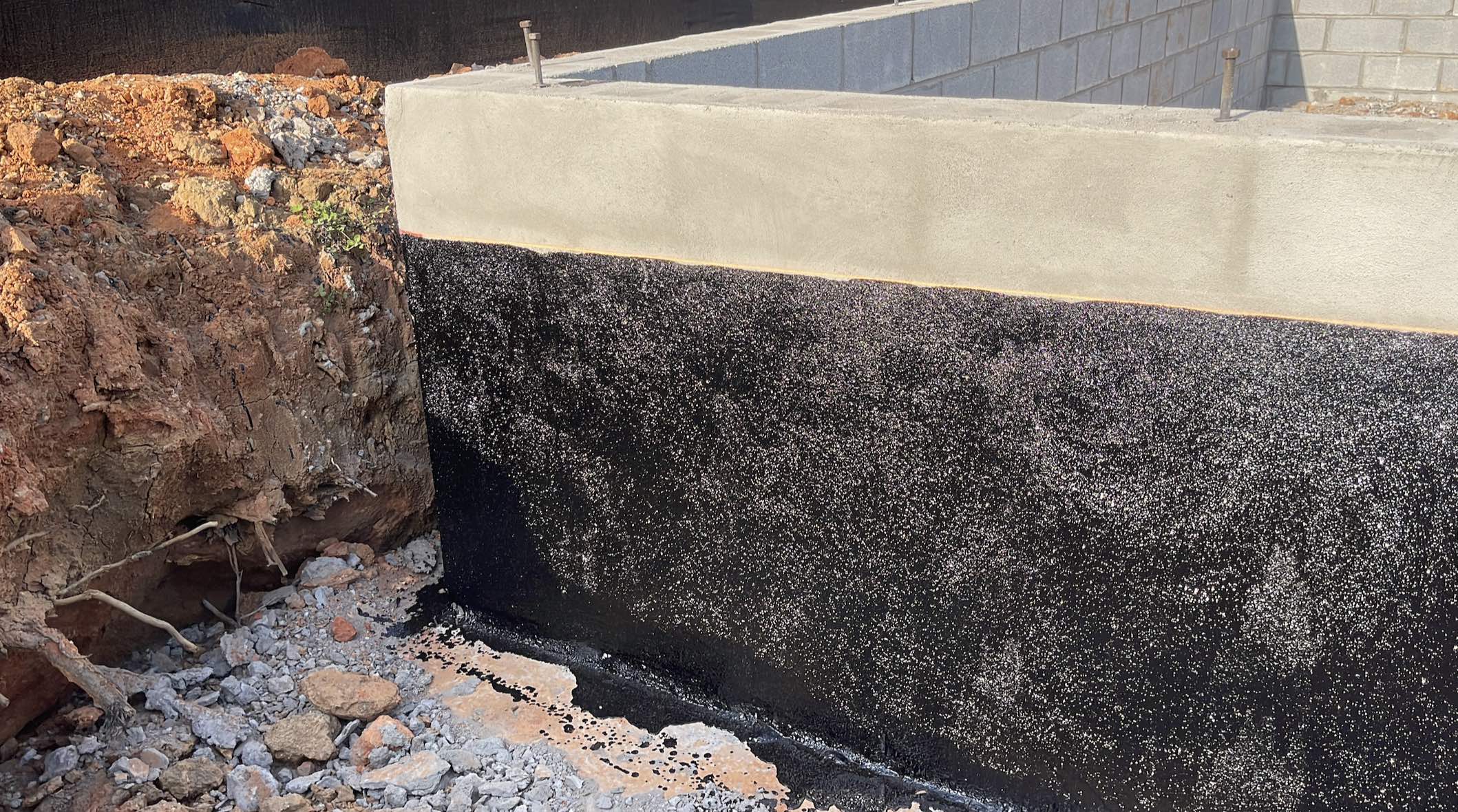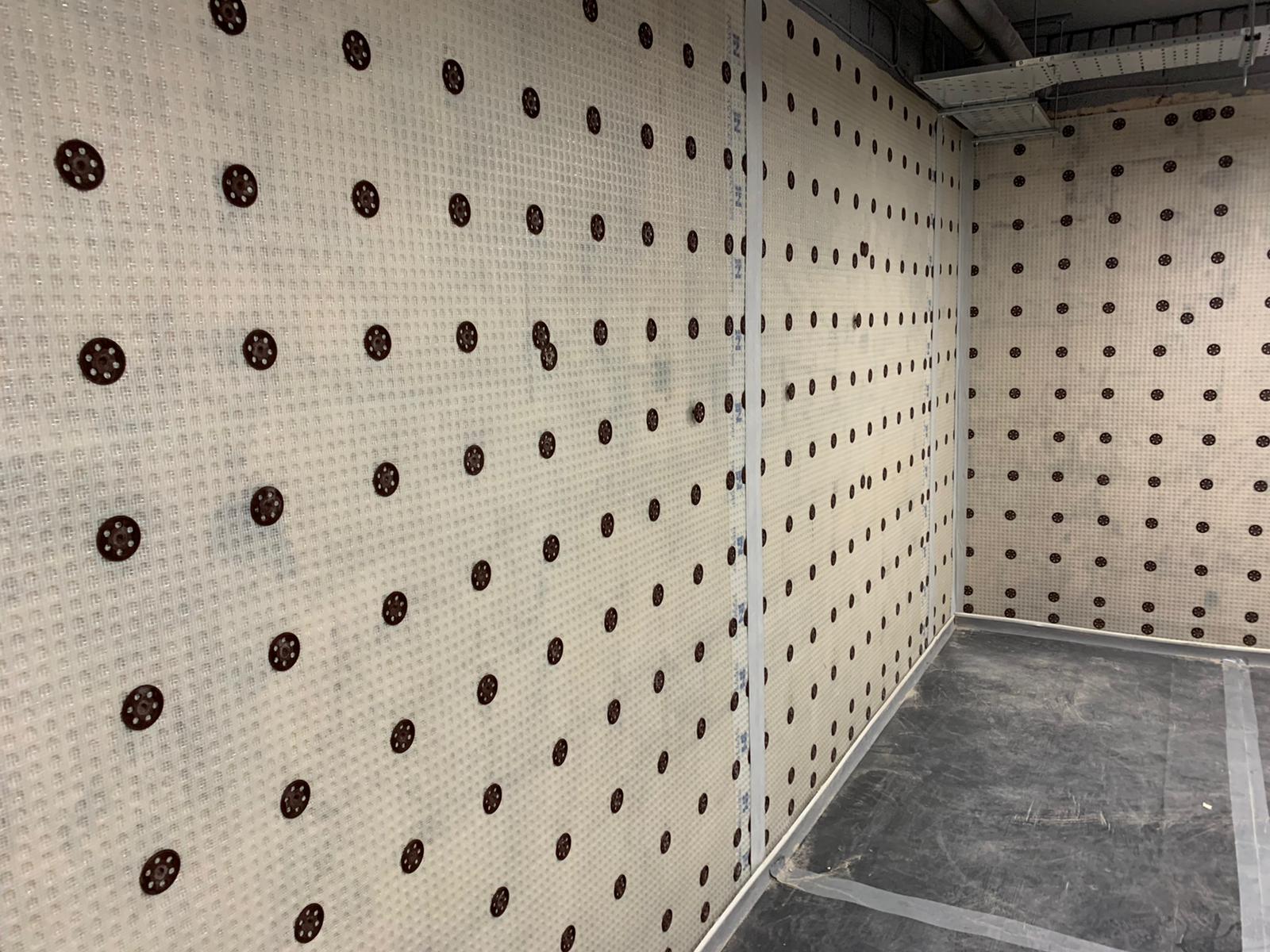How professional damp proofing newcastle essential for moisture prevention
Wiki Article
Checking Out the Different Strategies and Solutions for Effective Damp Proofing
Moisture in structures poses considerable challenges to both structural integrity and interior air high quality. Different strategies and services have emerged to fight this prevalent issue. From typical damp-proof membranes to innovative chemical therapies, each technique provides unique advantages. Understanding these options is necessary for efficient moisture control. Picking the right option depends on details structure problems and demands, motivating further exploration right into the most reliable wet proofing strategies offered.Comprehending the Reasons of Wetness
Moisture can arise from different resources, understanding these causes is essential for effective remediation. Commonly, dampness stems from three main resources: climbing damp, passing through damp, and condensation. Increasing wet takes place when groundwater travels upwards via permeable products, such as brick or stone, usually due to a lack of a reliable obstacle (mould removal newcastle). Permeating moist is normally brought on by outside aspects, consisting of roof leakages, damaged gutters, or damaged wall surfaces, permitting water to penetrate a property. Condensation, on the other hand, results from excess dampness in the air, typically intensified by poor ventilation and temperature level differences, causing water droplets developing on surfaces. Determining these underlying problems is important, as each kind of dampness needs a customized method for remediation. Correct assessment assists in determining the most effective options, ultimately safeguarding the structural integrity of a building and enhancing interior air qualityTraditional Damp-Proof Membranes

Chemical Damp-Proofing Solutions
Chemical damp-proofing solutions provide a cutting-edge method to avoiding dampness invasion in buildings. These methods commonly entail the application of fluid chemicals that permeate stonework and create a barrier versus increasing wet. Typically utilized chemicals consist of silanes, siloxanes, and various other water-repellent representatives that react with surface materials to create a hydrophobic layer.The application process usually needs boring openings into the wall surfaces, infusing the chemical option, and allowing it to cure. This method is specifically advantageous for older frameworks where typical damp-proof membrane layers might be not practical. Moreover, chemical damp-proofing can be less turbulent and much more cost-efficient than comprehensive remodelling projects.While efficient, these remedies depend on appropriate application and environmental problems for peak performance. Normal maintenance and tracking are essential to assure the durability of the damp-proofing therapy. In general, chemical damp-proofing represents a flexible choice for guarding buildings versus moisture-related damagesTooth Cavity Wall Surface Construction Methods
Cavity wall building and construction techniques supply numerous benefits, especially in moisture control and power performance. By including an air space in between two layers of stonework, these wall surfaces properly mitigate water ingress while improving insulation. This combination not only shields frameworks from dampness yet also contributes to reduced energy usage.Benefits of Dental Caries Wall Surfaces
When considering reliable damp proofing techniques, the benefits of cavity walls stand apart plainly. Tooth cavity wall surfaces contain two different layers, creating an air space that effectively minimizes moisture penetration. This layout decreases the risk of moisture, as the external wall works as a barrier against rainfall and water access. In addition, tooth cavity walls improve thermal insulation, which adds to energy effectiveness by minimizing warm loss. They additionally supply audio insulation, assisting to create a quieter interior environment. In addition, the air void permits ventilation, which assists in moisture control and minimizes the chance of mold development. These advantages not only enhance the general comfort of a structure yet also add to its long life and architectural stability.Dampness Control Techniques
Reliable dampness control techniques are vital in dental caries wall surface construction to ensure lasting protection against wetness. One main technique includes the unification of weep holes, which assist in water drainage from the cavity, protecting against build-up. Furthermore, making use of breathable membrane layers can assist handle dampness levels while permitting entraped vapor to escape. Proper placement of insulation is also essential, as it should not block drain paths. In addition, making certain that the external fallen leaves of the dental caries wall surface are constructed with water-resistant materials improves overall longevity. Regular upkeep checks are necessary to recognize any type of clogs or damage early, securing the framework's honesty. Ultimately, a mix of these techniques creates a durable protection versus moisture intrusion in cavity wall surfaces.
Insulation and Energy Performance
Insulation plays an essential role in improving power performance within cavity wall surface construction. By incorporating protecting materials, these walls create a thermal barrier that lessens warmth loss and reduces energy consumption. Reliable insulation not only helps maintain a stable interior temperature level however likewise minimizes the risk of dampness, as it protects against condensation within the wall dental caries. Numerous methods, such as using inflexible foam boards or mineral woollen, can be used to achieve perfect insulation efficiency. In addition, appropriate setup is important to ensure that spaces and voids are lessened, which can or else jeopardize power efficiency. Eventually, a well-insulated tooth cavity wall contributes significantly to overall sustainability and decreases cooling and heating prices for house owners.Outside Damp Proofing Techniques
Outside wet proofing methods are crucial for safeguarding structures from wetness infiltration. 2 effective methods consist of the application of water resistant membrane layers and the installation of French drains pipes. These solutions aid minimize water buildup and maintain the integrity of buildings.Waterproof Membrane Layer Application
While different methods exist for protecting against moisture ingress, the application of water-proof membrane layers stays an extremely efficient exterior moist proofing technique. These membranes are generally made from materials such as polyethylene, rubber, or modified asphalt, offering a durable obstacle against water infiltration. The installation process includes using the membrane to the external surface areas of walls or foundations, making certain total insurance coverage to avoid leaks. Correct attachment and sealing at joints are vital to making best use of effectiveness. Waterproof membrane layers can be used in numerous types, consisting of liquid finishes and sheet membranes, allowing for versatility based upon the details demands of the framework. This method not just shields structures from dampness however likewise enhances their durability and architectural stability.French Drainpipe Installment
One efficient approach for handling groundwater and protecting against wetness build-up around a structure's foundation is the installment of a French drain. This water drainage system contains a trench full of gravel and a perforated pipeline that reroutes surface water away from the foundation. Correct installment requires cautious planning, making sure that the drain inclines away from the framework to assist in perfect water circulation. Furthermore, the location of the drainpipe is vital; it needs to be placed in areas susceptible to pooling or excess wetness. Normal maintenance, consisting of clearing up debris from the gravel and ensuring the pipeline stays unblocked, is crucial for long-term effectiveness. Inevitably, a well-installed French drainpipe can substantially lower the risk of water-related concerns in structures and cellars.Inside Waterproofing Methods
Interior waterproofing techniques are essential for securing a building's interior from wetness infiltration and possible water damages. These techniques commonly include the application of specialized materials and methods created to produce a wetness barrier within the structure. One common approach is the use of waterproof finishes or sealants on walls and floors, which prevent dampness from penetrating surfaces.Additionally, setting up interior drain systems, such as sump pumps, can efficiently manage water build-up in basements and creep rooms. Another approach includes making use of vapor barriers, which are set up to prevent wetness motion from the ground into living spaces.Moreover, attending to any type of splits or voids in walls or foundations with suitable sealers ensures a detailed defense versus water breach. By implementing these interior waterproofing methods, homeowner can greatly reduce the threat of mold growth, structural damages, and various other moisture-related issues. Correct implementation of these techniques is vital for long-term security and structure honesty.Regular Maintenance and Examination Practices
Routine maintenance and assessment techniques are important for ensuring the long-lasting efficiency of wet proofing services in any building. Routine checks make it possible for homeowner to determine very early indications of wetness intrusion, such as peeling paint, mold growth, and stuffy smells. These signs can signify underlying problems that call for immediate attention.Inspections should be carried out a minimum of every year, concentrating on susceptible areas like cellars, creep spaces, and exterior walls. During these assessments, building owners should examine sealers, water drainage systems, and ventilation to validate they function correctly.Additionally, preserving seamless gutters and downspouts is vital, as stopped up systems can result in water build-up near the structure. Carrying out a normal upkeep schedule, together with prompt repair work, can significantly prolong the lifespan of damp proofing procedures and safeguard the structural stability of the structure. Proactive actions ultimately add to the general health and wellness of the living setting.Often Asked Inquiries
The Length Of Time Does Damp Proofing Generally Last?
The duration of wet proofing effectiveness varies, commonly lasting in between 20 to 50 years. Variables such as application quality, ecological conditions, and maintenance practices significantly affect the durability of the wet proofing treatment.
Can I Damp Evidence My Home Myself?
The private pondered the expediency of do it yourself damp proofing. With proper study and the right materials, it is feasible. However, they additionally identified the importance of expert assistance to assure durable effectiveness and prevent future concerns.What Are the Signs of Ineffective Damp Proofing?
Indicators of inefficient damp proofing consist of relentless stuffy odors, noticeable mold and mildew growth, peeling off paint, wet spots on walls, and wood degeneration - damp removal newcastle. House owners need to address these problems promptly to stop further damage and health and wellness concernsDoes Damp Proofing Affect Indoor Air Quality?

How Much Does Specialist Damp Proofing Cost?
Specialist wet proofing expenses vary click here significantly, normally varying from $1,000 to $5,000 depending upon the residential property's size, the degree of the damp problem, and chosen methods. Each scenario requires a customized analysis for precise rates. Generally, dampness originates from three main sources: climbing wet, passing through moist, and condensation. When taking into consideration reliable wet proofing techniques, the advantages of dental caries walls stand out prominently. External moist proofing methods are crucial for safeguarding frameworks from wetness infiltration. While different methods exist for preventing wetness ingress, the application of waterproof membranes remains an extremely reliable external wet proofing method. Signs of inefficient moist proofing include persistent mildewy odors, visible mold and mildew development, peeling off paint, moist spots on walls, and wood degeneration.Report this wiki page